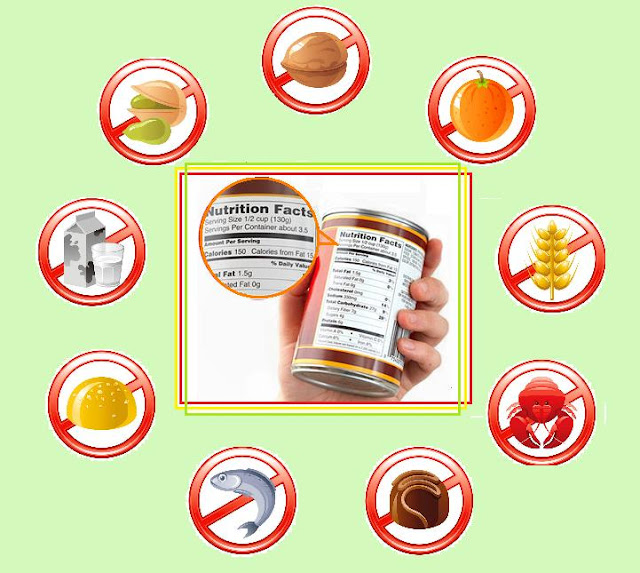Did you know that even the most diligent of food label scanning can still result in allergic reactions to your food? It's true. Some products labeled dairy-free or gluten-free may still contain some enzyme or chemical that is derived from the very products you are trying to avoid. For this reason, the Federal Drug Administration (FDA) is currently working on a series of definitions for food descriptions that would become the standard in the industry.
Right now,
food labeling is a requirement. The top food allergy triggers must be clearly
listed on all food packaging if it contains those particular food products.
Even if the foods do not contain allergens themselves, if they are made in the
same factory that produces other food products that do contain allergens, the
product must also clearly state that. For example, many cereal manufacturers
may produce a cereal that contains no allergens that cause a reaction but if it
is produced in the same manufacturing plant that produces cereal with nuts in
it, this could be a problem.
While reading
food labels is a very smart move, you must become more educated on the
different ways that an ingredient can be described, particular if it is derived
from something you are allergic to. Here are some things you should keep an eye
on:
- Always read the product label,
even if it is a product you have bought for years. On occasion,
manufacturers will change how they make things or alter ingredients
slightly and they can do so without warning. Therefore, label reading for
even the tried and true product staples in your home is a must.
- When a label says its
"free" of something, please note that these claims are not
regulated by the federal government and therefore still could contain
trace amounts of the ingredient derivative. For instance, powdered coffee
creamers may say dairy-free but the fact is they still contain some type
of milk derivative in powdered form.
- The "may contain" line
on food labels can catch consumers unaware as well and while this covers
the manufacturer, it is a pain in the backside. "May contain"
basically means that there could have been some type of contamination of a
product with a known allergen. The cereal example mentioned in an above paragraph
is a prime example of this.
The problem
is that sometimes, the food label is a bit ambiguous. Do you even chance
consuming a product that has the "may contain" certain ingredients in
it? Or do you avoid them altogether? If your food allergies are mild, perhaps
you could but there are no guarantees. It is this Russian roulette type of
approach to food labeling and consumption that the FDA is trying to address.
The best
practice to follow when protecting you from food allergies is to avoid anything
suspect. Seek out internet grocery stores that cater to people just like you
with food allergies who can guarantee products. Look to health food stores and
other shops that guarantee similar protection with their food items.

No comments:
Post a Comment